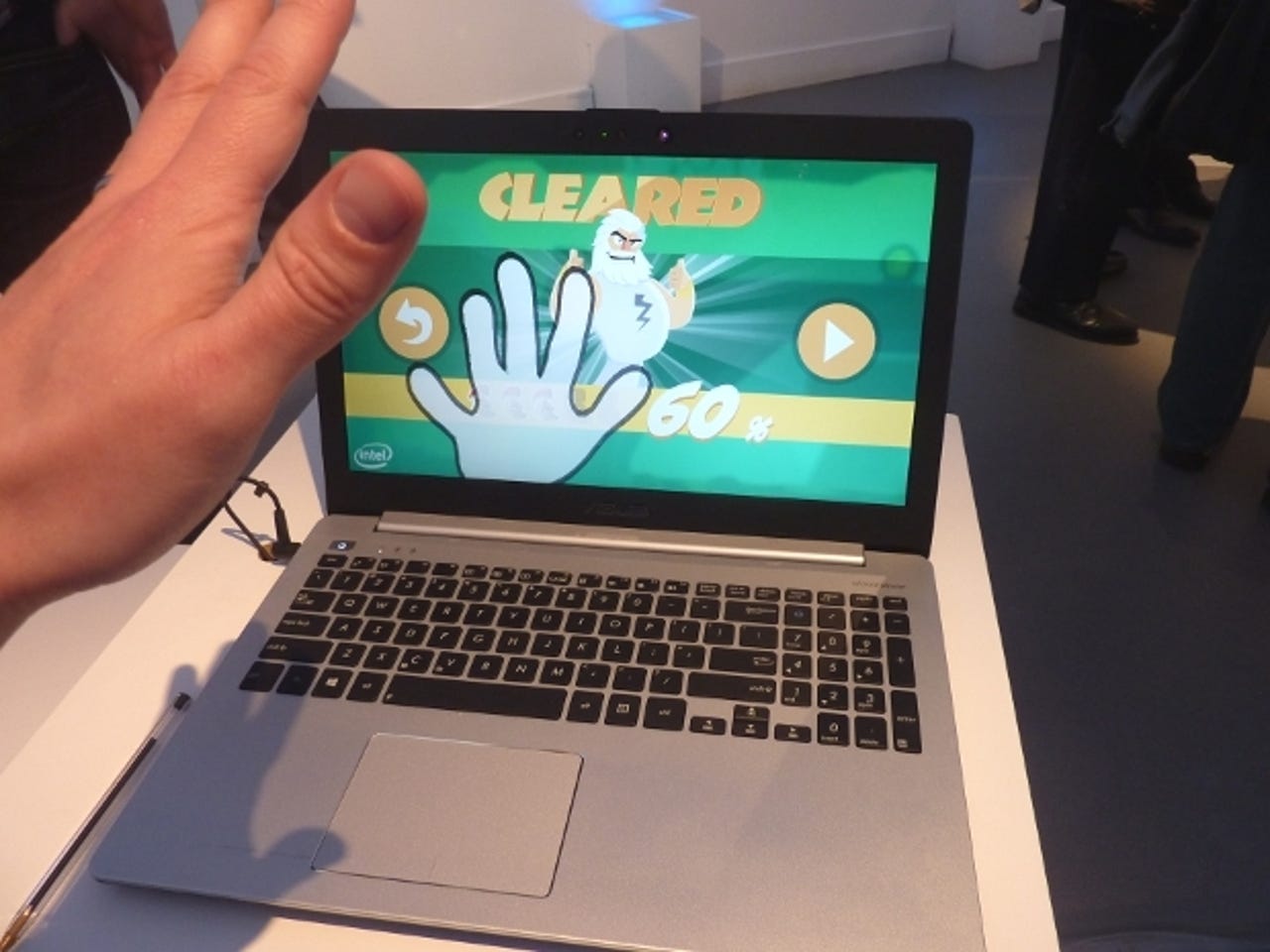Intel's vision of the future: Wireless charging, 3D displays and intelligent cars

Intel showcased a number of new, nearly ready and blue-sky concept products at an event in London this week. Few of the gadgets in the showcase are ones that Intel will itself build and sell; rather, the idea is to show consumer electronics companies and consumers themselves what Intel thinks is possible to build using its processors and other technology over the coming years.
Above is Intel's wireless charging bowl, first seen at CES earlier this year. Intel said unlike other wireless charging technologies, the gadgets don't have to be precisely positioned in order to get the juice — they just need to be put in the bowl, which will also be able to charge more than one device at once using magnetic resonance technology. No date has been set for when the bowl will be on sale.
All photos: Steve Ranger/ZDNet
Intel also showed off its RealSense technology — a combination of a 3D camera and software that allows PC users to control devices by gesture — which will be built into ultrabooks later this year.
Here, the technology is being used with a holographic display which makes it possible to play games and interact using gesture — for example, pressing buttons on what to others might look like thin air.
Here, the RealSense system is using its 3D camera to track the user's hand and display it on the screen as part of a game.

Here's another example of RealSense being used in place of a keyboard or mouse.
This is the Intel Education two-in-one hybrid device aimed at schools. The rugged device is designed to survive a 70cm drop and is water and dust resistant. It also features Intel's alternative power architecture, which makes it possible to power the device using solar panels (seen here on the right) — useful in areas without mains electricity.
Here's another view of the device, showing the stylus. The hybrid also comes with a snap-on magnification lens which turns the camera into a microscope, and a temperature sensor probe for science experiments.
This Twitter bubble machine is powered by Intel's Galileo — a microcontroller board based on an Intel system-on-a-chip.
When the appropriate hashtag is spotted in a tweet, the bubble machine starts up. Intel aims to give 50,000 of these boards to universities around the world.
Here's the board being used to run a set of lights — the linked smartphone app can change the colours. Galileo is aimed at students and makers while the smaller board, called Edison, is aimed at startups and developers of wearable projects.
This is Intel's Jarvis headset, built to showcase Intel's 'low power always listening' technology.
By saying "Hello Jarvis" the wearer can ask questions and get information. Similar to other wearables, the headset would be paired with a smartphone, which Intel claims will give a faster response than cloud-powered digital assistants such as Siri. It's pictured here next to a Basis B1 smartwatch; Intel acquired Basis in March this year.
Intel also showed off its vision of the future of driving — cars that respond to who is driving or even in the car, for example playing different playlists or displaying different sets of information for different drivers or passengers by pulling information from their smartphones.